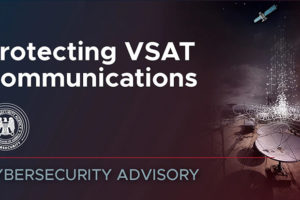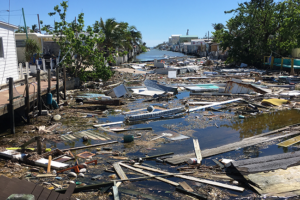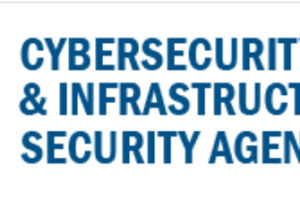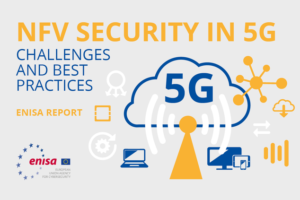UK joins international cyber agency partners to release supply chain guidance

THE UK and its international partners have today (Wednesday) issued advice to IT service providers and their customers as part of wider efforts to protect organisations in the wake of Russia’s invasion of Ukraine.
The joint advisory from the National Cyber Security Centre (NCSC) – a part of GCHQ – and its partners sets out a series of practical steps for managed service providers (MSPs) and their customers.
The advisory has been issued alongside the US’s Cybersecurity and Infrastructure Security Agency (CISA), Australian Cyber Security Centre (ACSC), Canadian Centre for Cyber Security (CCCS), New Zealand National Cyber Security Centre (NZ NCSC), National Security Agency (NSA), and Federal Bureau of Investigation (FBI).
It is being released on the second day of the NCSC’s CYBERUK conference in Wales, which a number of these partners are attending.
MSPs provide IT support to their customers in various ways, for example through software or cyber security services, and in order to do so they are granted privileged access to a customer’s network.
This can create opportunities for attackers, who can gain access to an organisation’s network by compromising their MSPs.
One of the most significant examples of these supply chain attacks was that carried out in 2020 against US software company Solarwinds, which impacted customers throughout the world.
Organisations are being encouraged to consider the advisory, Protecting Against Cyber Threats to Managed Service Providers and their Customers, in conjunction with guidance from the NCSC and others in relation to the heightened tensions as a result of events in Ukraine.
NCSC CEO Lindy Cameron said:
“We are committed to further strengthening the UK’s resilience, and our work with international partners is a vital part of that.
“Our joint advisory with international partners is aimed at raising organisations’ awareness of the growing threat of supply chain attacks and the steps they can take to reduce their risk.”
CISA Director Jen Easterly said:
“I strongly encourage both managed service providers and their customers to follow this and our wider guidance – ultimately this will help protect not only them but organisations globally.
“As this advisory makes clear, malicious cyber actors continue to target managed service providers, which is why it’s critical that MSPs and their customers take recommended actions to protect their networks.
“We know that MSPs that are vulnerable to exploitation significantly increases downstream risks to the businesses and organisations they support. Securing MSPs are critical to our collective cyber defense, and CISA and our interagency and international partners are committed to hardening their security and improving the resilience of our global supply chain.”
Abigail Bradshaw CSC, Head of the Australian Cyber Security Centre, said:
“Managed Service Providers are vital to many businesses and as a result, a major target for malicious cyber actors.
“These actors use them as launch pads to breach their customers’ networks, which we see are often compromised through ransomware attacks, business email compromises and other methods. Effective steps can be taken to harden their own networks and to protect their client information. We encourage all MSPs to review their cyber security practices and implement the mitigation strategies outlined in this Advisory.”
Sami Khoury, Head, Canadian Centre for Cyber Security, said:
“We’ve seen the damage and impact cyber compromises can have on supply chains, managed service providers, and their customers.
“These compromises can result in costly mitigation activities and lengthy downtime for clients. We strongly encourage organizations to read this advisory and implement these guidelines as appropriate.”
Lisa Fong, Director of NZ NCSC, said:
“Supply chain vulnerabilities are amongst the most significant cyber threats facing organisations today.
“As organisations strengthen their own cyber security, their exposure to cyber threats in their supply chain increasingly becomes their weakest point. Organisations need to ensure they are implementing effective controls to mitigate the risk of cyber security vulnerabilities being introduced to their systems via technology suppliers such as managed service providers. They also need to be prepared to effectively respond to when issues arise.”
Rob Joyce, Director NSA, said:
“This joint guidance will help MSPs and customers engage in meaningful discussions on the responsibilities of securing networks and data.
“Our recommendations cover actions such as preventing initial compromises and managing account authentication and authorization.”
Bryan Vorndran, Cyber Division Assistant Director FBI, said:
“Through this joint advisory, the FBI, together with our federal and international partners, aims to encourage action by MSPs and their customers, as malicious cyber actors continue to target this vector for entry to threaten networks, businesses, and organisations globally.
“These measures and controls should be implemented to ensure hardening of security and minimise potential harm to victims.”
A range of steps are set out for MSPs and their customers in the latest advisory, including:
Organisations should store their most important logs for at least six months, given incidents can take months to detect.
MSPs should recommend the adoption of multi-factor authentication (MFA) across all customer services and products, while customers should ensure that their contractual arrangements mandate the use of MFA on the services and products they receive.
Organisations should update software, including operating systems, applications, and firmware, and prioritise the patching of known exploited vulnerabilities.
The advisory makes clear that organisations should implement these guidelines as appropriate to their unique environments, in accordance with their specific security needs, and in compliance with applicable regulations.










